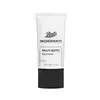What's inside
What's inside
 Key Ingredients
Key Ingredients

 Benefits
Benefits

 Concerns
Concerns

 Ingredients Side-by-side
Ingredients Side-by-side

Water
Skin ConditioningInulin
Skin ConditioningGlycerin
HumectantIsoamyl Laurate
EmollientPropanediol
SolventSqualane
EmollientCetearyl Olivate
Sorbitan Olivate
EmulsifyingAvena Sativa Kernel Oil
Skin ConditioningPhenoxyethanol
PreservativeYogurt Powder
Sodium Caproyl Prolinate
HumectantCarbomer
Emulsion StabilisingIsoamyl Cocoate
Benzyl Alcohol
PerfumingSodium Hyaluronate
HumectantSodium Stearoyl Glutamate
CleansingEthylhexylglycerin
Skin ConditioningDiglucosyl Gallic Acid
Trisodium Ethylenediamine Disuccinate
Dehydroacetic Acid
PreservativePolysorbate 60
EmulsifyingCitric Acid
BufferingHeptapeptide-7
Skin ConditioningLecithin
EmollientPotassium Sorbate
PreservativeSodium Benzoate
MaskingXanthan Gum
EmulsifyingSorbitan Isostearate
EmulsifyingWater, Inulin, Glycerin, Isoamyl Laurate, Propanediol, Squalane, Cetearyl Olivate, Sorbitan Olivate, Avena Sativa Kernel Oil, Phenoxyethanol, Yogurt Powder, Sodium Caproyl Prolinate, Carbomer, Isoamyl Cocoate, Benzyl Alcohol, Sodium Hyaluronate, Sodium Stearoyl Glutamate, Ethylhexylglycerin, Diglucosyl Gallic Acid, Trisodium Ethylenediamine Disuccinate, Dehydroacetic Acid, Polysorbate 60, Citric Acid, Heptapeptide-7, Lecithin, Potassium Sorbate, Sodium Benzoate, Xanthan Gum, Sorbitan Isostearate
Water
Skin ConditioningNiacinamide
SmoothingGlycerin
HumectantAlpha-Glucan Oligosaccharide
CleansingParaffinum Liquidum
EmollientCetearyl Alcohol
EmollientPalmitic Acid
EmollientInulin
Skin ConditioningPetrolatum
EmollientStearic Acid
CleansingPolymnia Sonchifolia Root Juice
Skin ConditioningPhenoxyethanol
PreservativeButyrospermum Parkii Butter
Skin ConditioningGlyceryl Stearate
EmollientMaltodextrin
AbsorbentPEG-100 Stearate
Carbomer
Emulsion StabilisingAllantoin
Skin ConditioningSodium Acrylate/Sodium Acryloyldimethyl Taurate Copolymer
Emulsion StabilisingIsohexadecane
EmollientTocopheryl Acetate
AntioxidantEthylhexylglycerin
Skin ConditioningDimethicone
EmollientAlpha-Arbutin
AntioxidantSodium Hydroxide
BufferingXanthan Gum
EmulsifyingO-Cymen-5-Ol
AntimicrobialPolysorbate 80
EmulsifyingLactobacillus
Skin ConditioningSorbitan Oleate
EmulsifyingSimmondsia Chinensis Seed Oil
EmollientSodium Hyaluronate
HumectantPanthenol
Skin ConditioningButylene Glycol
HumectantDenatonium Benzoate
MaskingPortulaca Oleracea Extract
Skin ConditioningWater, Niacinamide, Glycerin, Alpha-Glucan Oligosaccharide, Paraffinum Liquidum, Cetearyl Alcohol, Palmitic Acid, Inulin, Petrolatum, Stearic Acid, Polymnia Sonchifolia Root Juice, Phenoxyethanol, Butyrospermum Parkii Butter, Glyceryl Stearate, Maltodextrin, PEG-100 Stearate, Carbomer, Allantoin, Sodium Acrylate/Sodium Acryloyldimethyl Taurate Copolymer, Isohexadecane, Tocopheryl Acetate, Ethylhexylglycerin, Dimethicone, Alpha-Arbutin, Sodium Hydroxide, Xanthan Gum, O-Cymen-5-Ol, Polysorbate 80, Lactobacillus, Sorbitan Oleate, Simmondsia Chinensis Seed Oil, Sodium Hyaluronate, Panthenol, Butylene Glycol, Denatonium Benzoate, Portulaca Oleracea Extract
Ingredients Explained
These ingredients are found in both products.
Ingredients higher up in an ingredient list are typically present in a larger amount.
Carbomer is a polymer of acrylic acid. Its main role is to create a gel consistency.
A high amount of carbomer can cause pilling or balling up of products. Don't worry, most products contain 1% or less of carbomer.
Ethylhexylglycerin (we can't pronounce this either) is commonly used as a preservative and skin softener. It is derived from glyceryl.
You might see Ethylhexylglycerin often paired with other preservatives such as phenoxyethanol. Ethylhexylglycerin has been found to increase the effectiveness of these other preservatives.
Glycerin is already naturally found in your skin. It helps moisturize and protect your skin.
A study from 2016 found glycerin to be more effective as a humectant than AHAs and hyaluronic acid.
As a humectant, it helps the skin stay hydrated by pulling moisture to your skin. The low molecular weight of glycerin allows it to pull moisture into the deeper layers of your skin.
Hydrated skin improves your skin barrier; Your skin barrier helps protect against irritants and bacteria.
Glycerin has also been found to have antimicrobial and antiviral properties. Due to these properties, glycerin is often used in wound and burn treatments.
In cosmetics, glycerin is usually derived from plants such as soybean or palm. However, it can also be sourced from animals, such as tallow or animal fat.
This ingredient is organic, colorless, odorless, and non-toxic.
Glycerin is the name for this ingredient in American English. British English uses Glycerol/Glycerine.
Learn more about GlycerinInulin is a polysaccharide (carbohydrate) with prebiotic and antioxidant properties.
The majority of inulin is extracted from chicory, but can also be obtained from other plants such as garlic, onion, asparagus, and sugarcane.
Studies show inulin may help with controlling your skin's natural microbiota when applied topically.
The antioxidant potential of inulin varies depending on the source.
Learn more about InulinPhenoxyethanol is a preservative that has germicide, antimicrobial, and aromatic properties. Studies show that phenoxyethanol can prevent microbial growth. By itself, it has a scent that is similar to that of a rose.
It's often used in formulations along with Caprylyl Glycol to preserve the shelf life of products.
Sodium Hyaluronate is hyaluronic acid's salt form. It is commonly derived from the sodium salt of hyaluronic acid.
Like hyaluronic acid, it is great at holding water and acts as a humectant. This makes it a great skin hydrating ingredient.
Sodium Hyaluronate is naturally occurring in our bodies and is mostly found in eye fluid and joints.
These are some other common types of Hyaluronic Acid:
Learn more about Sodium HyaluronateWater. It's the most common cosmetic ingredient of all. You'll usually see it at the top of ingredient lists, meaning that it makes up the largest part of the product.
So why is it so popular? Water most often acts as a solvent - this means that it helps dissolve other ingredients into the formulation.
You'll also recognize water as that liquid we all need to stay alive. If you see this, drink a glass of water. Stay hydrated!
Learn more about WaterXanthan gum is used as a stabilizer and thickener within cosmetic products. It helps give products a sticky, thick feeling - preventing them from being too runny.
On the technical side of things, xanthan gum is a polysaccharide - a combination consisting of multiple sugar molecules bonded together.
Xanthan gum is a pretty common and great ingredient. It is a natural, non-toxic, non-irritating ingredient that is also commonly used in food products.
Learn more about Xanthan Gum